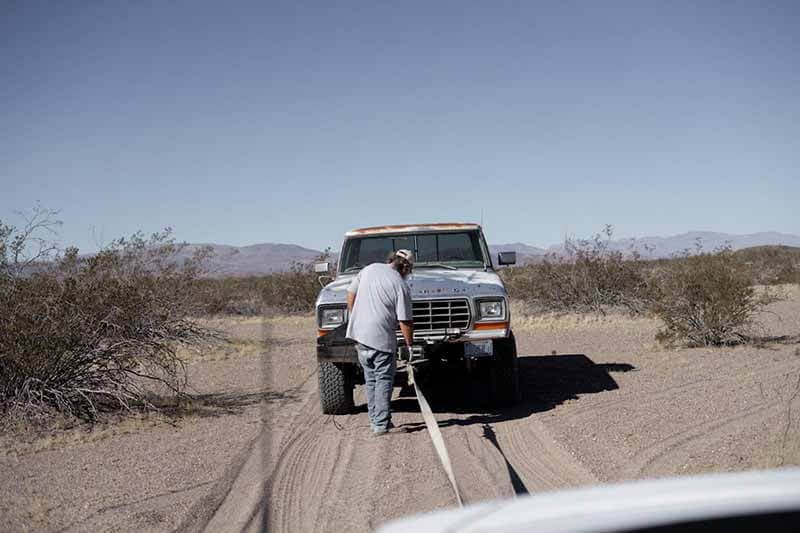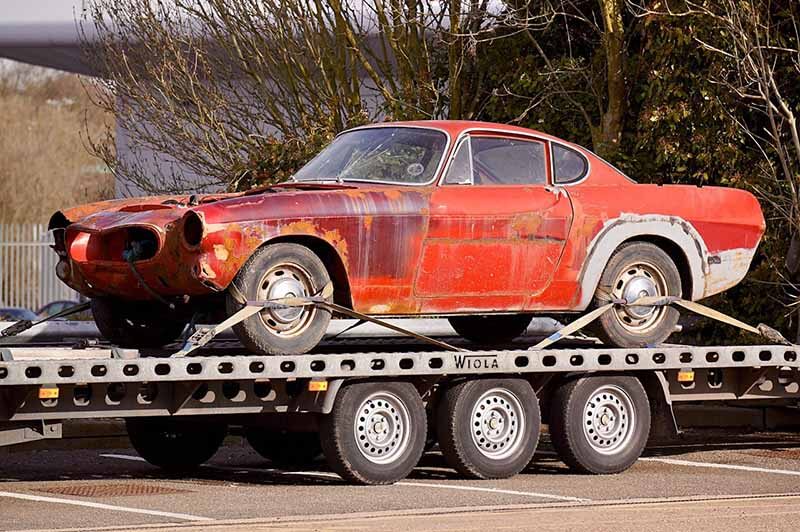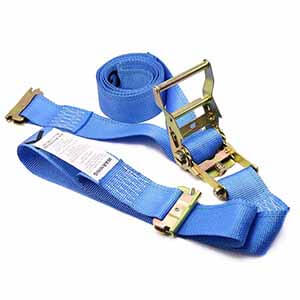Tow Straps vs. Recovery Ropes

Are you an off-road enthusiast? Or do you work in the field of vehicle rescue? No matter which one you are, it is very important to have the right vehicle rescue tools. Among them, tow straps and recovery ropes are the most common types, but they have different uses and have their own advantages and disadvantages.
We must highlight the importance of choosing the right rescue tools. The right rescue tools can not only ensure a smoother and safer recovery process but also minimize the risk of vehicle damage and reduce the possibility of injury. In this blog, we will talk about the difference between tow straps and recovery ropes, this will be helpful for you to make a smart choice for your next adventure.
What are Tow Straps?
Tow straps are the essential vehicle recovery tools that are widely used in roadside assistance. The vehicle tow straps are used to tow a disabled vehicle from an accident location to traffic police-designated parking spots and wait for further processing. They are designed in flat shape with reinforced loops or hooks at each end for easy attachment to tow points on vehicles.
The main function of a tow strap is to connect two vehicles and allow the vehicle in good condition to tow another disabled vehicle.
The Material of Towing Straps
Don’t mix the towing strap and recovery strap, the material used to produce the towing strap is polyester, not nylon. However, the material used to produce recovery straps is nylon, not polyester. This is because the usage scenarios and functions of these two straps are completely different. Using polyester to make the car towing straps is because this material is more rigid and less stretchy than nylon, which is an ideal choice for steady and controlled towing operations.
What are Recovery Ropes?
Recovery ropes, also known as kinetic recovery ropes, are specialized and designed for recovery purposes. Suitable for recovering vehicles that are stuck in mud, sand, snow, or other difficult conditions.
Unlike tow straps, the kinetic rope is highly elastic. This feature could allow the rope to stretch under load and then recoil, providing a powerful controlled pulling force and making the recovery job done.
The Material of Recovery Ropes
The kinetic recovery rope is generally made of nylon similar to elastic synthetic fibers. These materials provide great stretchability when the recovery vehicle pulls the stuck car out of the mud, and also provide great rebound ability when the job is done.
The Application Scenario of Recovery Ropes
- Recover the vehicle stuck in the mud or sand.
- Off-road rescue in challenging terrain.
- Rescue vehicles trapped in snow or ice.

How to Use a Tow Strap?
- You should prepare the tow strap, shackles, or hooks and gloves.
- Make sure the two vehicles are on stable ground and in neutral.
- Open the hazard lights for the two vehicles to alert other drivers.
- Find the tow hitch on the towing vehicle and find the recovery point on the disabled vehicle, then securely attach the hooks to the tow point (If using shackles, loop the tow strap through the shackle and attach it to the tow point, then securely tightened), and then check the connection.
- The two drives need to keep communication, then the towing vehicle should start slowly to avoid sudden jerks.
- Gradually increasing the speed till the disabled vehicle begins to move.
How to Use a Recovery Rope?
- Prepare the recovery rope, soft shackles or heavy-duty shackles, and gloves in your vehicle.
- Ensure the recovery vehicle should be positioned in line with the stuck vehicle.
- Find the rope securing points on two vehicles and use soft shackles to connect the recovery rope to the recovery points.
- Check the connection and make sure the vehicles are aligned.
- The rescue vehicle should move forward slowly, tighten the slack part of the recovery rope, and then continue to accelerate to gradually stretch the rope, using the elasticity and inertia of the rope to smoothly pull the trapped vehicle out of the predicament. During the process, maintain uniform acceleration and avoid sudden acceleration or braking to prevent unnecessary impact and damage to the vehicle and the rescue rope.
The Key Difference Between Tow Straps and Recovery Ropes
Many non-professionals often confuse the use of towing straps and kenetic recovery rope. They often think that the two can be used interchangeably. But in fact, they are very different. Below we will compare them from several aspects to make you more clear about the difference between them.
Material and Elasticity
- Tow Straps: Generally made from durable synthetic materials, such as polyester. This material is low elastic and more rigid.
- Recovery Ropes: Made from nylon with high elasticity, can stretch up to 30% of their length. This highly elastic material is suitable for rescuing vehicles stuck in pits.
Strength and Durability
- Tow Straps: If the material is made from polyester, it is extremely weather-resistant and UV-resistant. This material is also strong, you need to choose the different working capacities according to the towing force needed.
- Recovery Ropes: Has high tensile strength, highly durable, and able to withstand harsh conditions, a good assistant of outdoor rescue.
Ease of Use
- Tow Straps: Easy to attach and detach, usually featuring reinforced loops or hooks. But his design is less flexible in tight or awkward spaces.
- Recovery Ropes: Easy to attach with soft eyes at the ends, but need to pay more attention to ensure proper attachment due to their flexibility.
Safety Considerations
- Tow Straps: Low elasticity means if a tow strap snaps, it can recoil with a large force, this will pose a great threat to surrounding vehicles and pedestrians.
- Recovery Ropes: High elasticity performs well in absorbing loads, but requires good control of the speed of the rescue vehicle.

The Pros and Cons of Tow Straps
Car tow straps work very well in their application, let take a look at what pros and cons does this material have.
Pros
- Simple installation and disassembly, very convenient for users to operate.
- Generally, more affordable than recovery ropes.
- Suitable for towing disabled vehicles on flat surfaces.
Cons
- Low elasticity means that the strap may break easily in the event of a sudden brake, causing danger.
- Not suitable for recovery tasks in the deep mud, sand, or snow.
The Pros and Cons of Recovery Ropes
Don’t use the recovery rope in other applications, otherwise it will bring you a lot of trouble. Let’s take a look at the rope’s pros and cons.
Pros
- High elasticity minimizes the risk of sudden jerks and reduces the likelihood of damage to both vehicles.
- Suitable for rescuing the vehicle in difficult terrains.
Cons
- Generally, more expensive than a towing strap.
- If not properly maintained, they are usually more susceptible to wear and tear.
How to Check and Maintain the Tow Straps and Recovery Ropes?
Proper care and maintain the towing strap and recovery rope are also necessary to extend their service and keep them safe during usage. Let’s do it!
- Visual Check: Before and after every use, you need to visually inspect the strap and see if any signs of wear, fraying, or cuts.
- Check for Damage: The reinforced loops or hooks are easily worn out or damaged, so check these parts carefully.
- Cleanliness: Use water to wash and clean dirt and debris, don’t use any chemicals to wash the strap or rope.
- Avoid Overloading: Don’t exceed the strap’s or rope’s rated capacity.
- Avoid Abrasive Surfaces: When you use them to work, avoid the abrasive surface to contact them directly.
How to Store Tow Straps and Recovery Ropes?
- Dry Storage: Ensure the strap and rope are completely dry before storing them to prevent mold and mildew and store them in a cool and dry place, avoiding direct sunlight.
- Coil and Secure: Organize the strap and ropes neatly and secure them from unraveling.
Now, you must better understand the difference between tow straps and recovery straps, hope this can help you handle emergencies better.
Want to wholesale tow straps? Contact Webslingness to get your ideal straps.
You may interested in:
How to prevent and rescue your car from mud traps?

Dave Lee
Dave Lee has amassed over two decades of experience in the cargo control industry, serving as a product manager. Prior to joining Webslingness, he spent three years at a transportation company.


